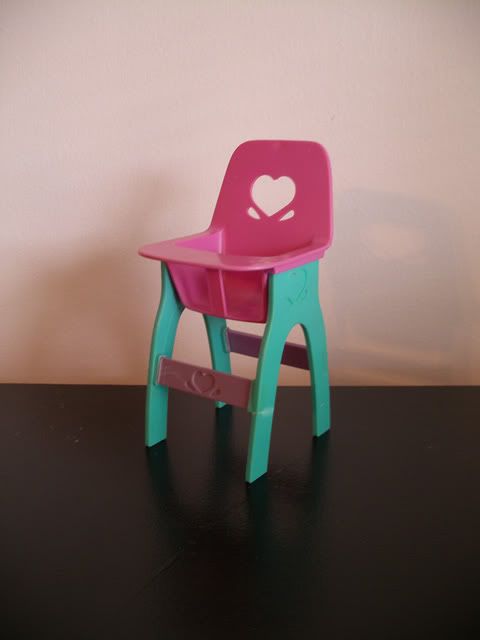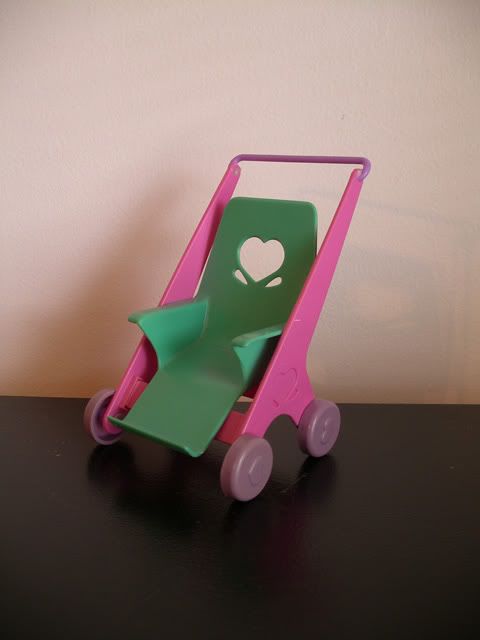High Chair:

Stroller:

I came across another company that used the same mold. Different (faded?) colors so we still can't say it was shared by various companies. I'm pretty sure these were always pink and blue though because it matches the pattern on the packaging and fits a boy/girl theme. I've also "quoted" some of the earlier photos you posted for comparison.
http://www.ebay.com/itm/360467991104 http://www.ebay.com/itm/271002148701
http://www.ebay.com/itm/271002148701
These particular dolls are "Cutie Pie" and were made by Largo Toys Ltd. The seller is in Canada.
EDIT: In other news, apparently there was a recall for this particular line in 1989.
http://www.cpsc.gov/cpscpub/prerel/prhtml89/89019.htmlFOR IMMEDIATE RELEASE
March 14, 1989
Release # 89-019
"Cutie Pie" Dolls Recalled For Potential Choking Hazards
WASHINGTON -- Largo Toys of New York is voluntarily recalling all models of "Cutie Pie" dolls because the arms can be pulled off and may present choking hazards to young children.
Sold singly and in combination with doll clothing and nursery equipment, the "Cutie Pie" dolls all measure five-and-a-quarter inches tall, and have either brown or white soft plastic bodies and blond, black or brown hair. Doll-size high chairs, strollers, cribs, rocking horse and bathtubs of blue, pink and white plastic were sold in combination with the doll. The bathtubs and high chairs contain small parts that may also pose potential choking hazards for young children.
All "Cutie Pie" dolls carry the label "Largo Toys, New York 20222" imprinted on the back of the head and some have "Made in China" imprinted on the back of the body Model numbers which were printed only on the packaging 86196, 86201, 86203, 86205, 86207 86209, 86210, 86211, 86214 and 86691.
In 1988, approximately 30,000 "Cutie Pie" dolls were sold in retail stores nationwide for $5 to $15. No injuries involving the dolls have been reported to the firms or to the U.S. Consumer Product Safety Commission.
Consumers having "Cutie Pie" dolls should immediately take them away from young children and return the doll and accessories to the store where purchased for a refund of the full purchase price.
U.S. Customs Service identified the potentially hazardous toys at the Port of Baltimore during "Operation Toyland," the joint surveillance program conducted with the U.S. Consumer Product Safety Commission (CPSC).






